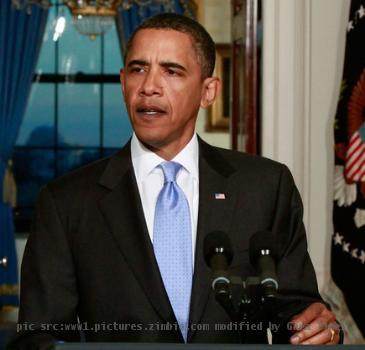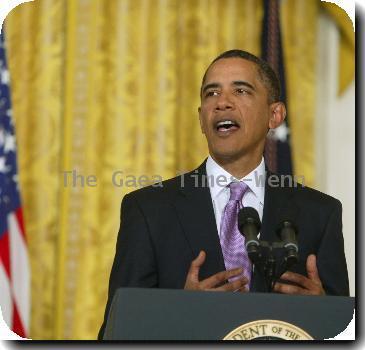BP works to put a tighter-fitting cap on the well and finally stop oil from gushing into Gulf
By Tom Breen, APMonday, July 12, 2010
BP works to put a tighter-fitting cap on the well
NEW ORLEANS — Deep-sea robots swarmed around BP’s ruptured oil well Monday in a delicately choreographed effort to attach a tighter-fitting cap that could finally stop crude from gushing into the Gulf of Mexico nearly three months into the crisis.
Video of the billowing brown oil leak showed glimpses of yellow equipment and swinging robot arms engaged in a project akin to building a giant Lego tower underwater.
BP officials said that the 18-foot-high, 150,000-pound metal cap should be attached on Monday but that they will have to test and monitor the equipment for two days to see if it can throttle the nation’s worst offshore oil spill. On Monday evening, the cap appeared on BP’s underwater video to be very close to the top of the well.
From the White House to Gulf Coast marinas and town halls, all eyes were on the slow, deliberate process a mile below the sea. President Barack Obama is getting repeated updates, his adviser David Axelrod said. Residents on the coast were skeptical, though, and know that even if the gusher is contained, the disaster will be far from over.
If the cap works, the blown-out well will still be leaking. But the newer, tighter cap will enable BP to capture all the oil and funnel it up to ships on the surface if necessary.
One of those ships, the Helix Producer, began operating Monday and should be up to its capacity of collecting roughly 1 million gallons of oil a day within a few days, Chief Operating Officer Doug Suttles said.
A permanent fix will have to wait until one of two relief wells being drilled reaches the broken well, which will then be plugged up with drilling mud and cement. That may not happen until mid-August.
BP’s confidence in the cap is growing, Suttles said at a Monday news briefing. But he struck a cautious note, after a series of failed attempts by the company to contain the leak since the April 20 oil rig explosion that killed 11 workers and triggered the spill.
“Until we have the cap on, securely fitted in place, and know it’s operating per the design, we have to recognize this is a complex operation,” Suttles said.
Of particular concern is the potential for ice-like crystals, or hydrates, that could build up inside the cap where it connects to the well.
Engineers are spraying a chemical that acts as an antifreeze, concerned that if the crystals start forming they will compound and clog the piping. They do not want the flow of oil to stop instantaneously, said Don Van Nieuwenhuise, director of Professional Geosciences Programs at the University of Houston. Shutting the oil off too quickly could cause another explosion, he said.
“Rather than like a train running into a brick wall, it’ll be more like putting the brakes on slowly,” he said. “That’s what they’re aiming for. You can keep the brakes on and everyone arrives alive, or you hit the wall and have big problems.”
Meanwhile, the Obama administration issued a revised moratorium on deep-water offshore drilling Monday to replace the one that was struck down by the courts as heavy-handed. The original moratorium halted the approval of any new permits for deep-water projects and suspended drilling on 33 exploratory wells in the Gulf.
Interior Secretary Ken Salazar made the announcement, arguing that a pause is still needed to ensure that oil and gas companies implement safety measures to reduce risks — and are prepared to handle spills. The new moratorium is in effect through Nov. 30, and applies to any deep-water floating facility with drilling activities.
Work on the new capping operation began Saturday with the removal of a leaky cap that captured about 1 million of the 1.5 million to 2.5 million gallons of oil the government estimates is spilling from the well every day.
The new cap was designed to latch into place on top of another piece of equipment installed overnight. BP said that once it is securely fastened, it will be tested by closing off three separate valves that fit together snugly like pairs of fists, choking off the oil and blocking it from entering the Gulf.
Engineers will be watching pressure readings. High pressure is good, because it would mean the leak has been contained inside the wellhead machinery. But if readings are lower than expected, that could mean there is another leak elsewhere in the well.
“Another concern right now would be how much pressure the well can take,” and whether intense pressure would further damage the well, said Eric Smith, associate director of the Tulane Energy Institute.
Gulf residents closely watched the operation, knowing the damage already done to the biologically rich Gulf and the coast’s two leading industries, fishing and tourism.
“I think we’re going to see oil out in the Gulf of Mexico, roaming around, taking shots at us, for the next year, maybe two,” said Billy Nungesser, president of Louisiana’s oil-stained Plaquemines Parish. “If you told me today no more oil was coming ashore, we’ve still got a massive cleanup ahead.”
BP “can’t do much, but they know how to drill wells,” dock master Jimmy Beason said at a marina in Orange Beach, Ala. “I think that by the end of the month it will be stopped, and this work with the cap is part of it. I see the light at the end of the tunnel.”
As of Monday, between 89 million and 176 million gallons of oil had poured into the Gulf, according to government estimates.
Weber reported from Houston. Associated Press writers Frederic J. Frommer in Washington, Matt Brown and Colleen Long in New Orleans, Jay Reeves in Orange Beach, Ala., and Bert Mohr in Belle Chasse, La., contributed to this report.
Tags: Accidents, Barack Obama, Coastlines And Beaches, Energy, Environmental Concerns, Louisiana, New Orleans, North America, United States



